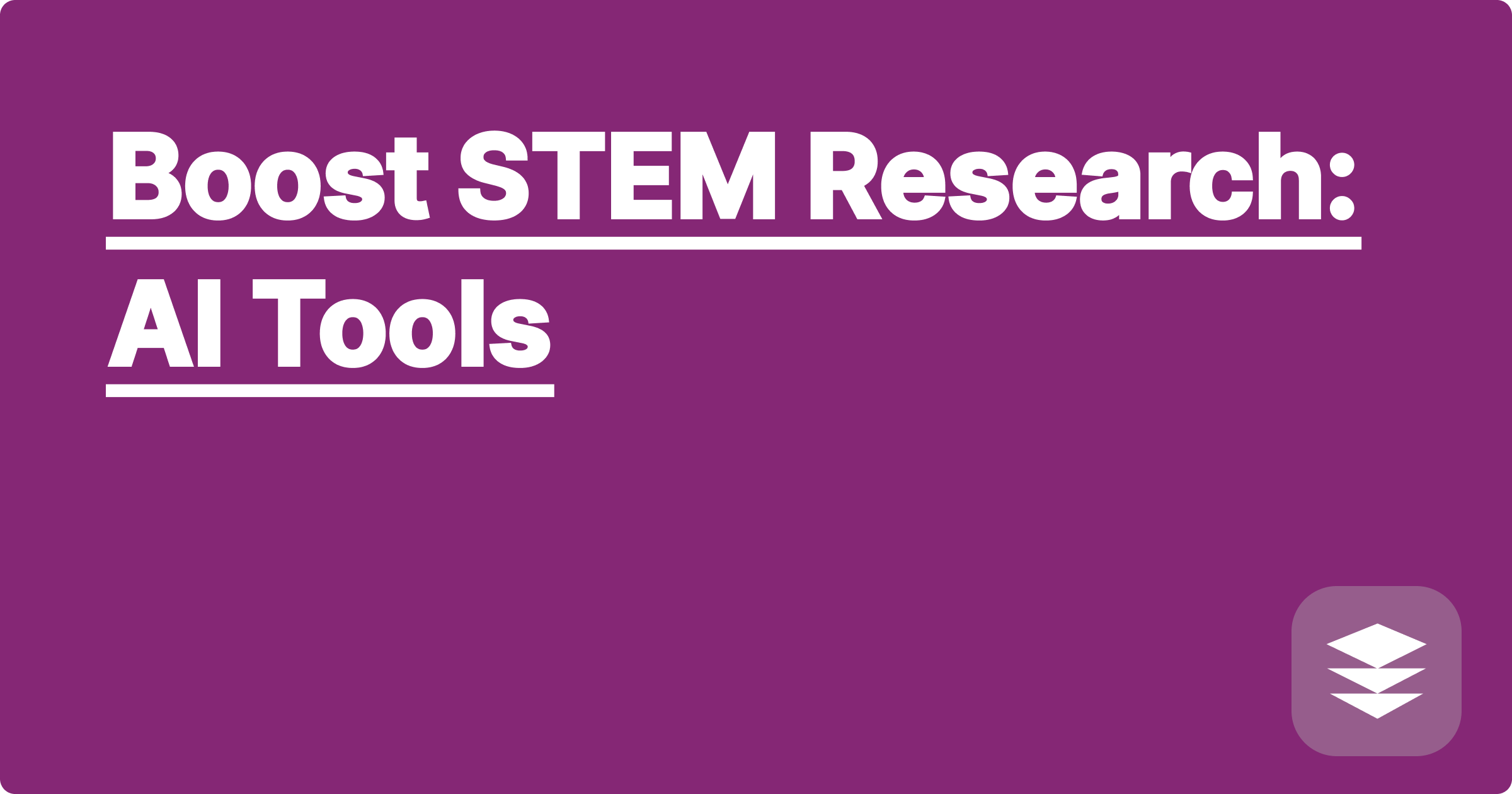
The rapid advancement of STEM fields presents both exciting opportunities and daunting challenges. Researchers and students face increasing pressure to analyze massive datasets, design complex experiments, and stay abreast of the latest publications, all within constrained timelines and resources. Artificial intelligence offers a powerful suite of tools to address these challenges and accelerate the pace of scientific discovery. AI can automate tedious tasks, uncover hidden patterns in data, and provide novel insights, ultimately empowering researchers to focus on the most creative and impactful aspects of their work.
This transformative potential of AI is particularly relevant for STEM students and researchers seeking to enhance their research efficiency and make significant contributions to their respective fields. Mastering these AI tools can provide a crucial edge in a competitive landscape, enabling researchers to tackle more ambitious projects, accelerate the research lifecycle, and disseminate their findings more effectively. Embracing AI is no longer optional; it is becoming essential for anyone seeking to thrive in the rapidly evolving world of STEM.
One significant challenge in modern STEM research lies in the sheer volume and complexity of data. High-throughput experiments and simulations generate terabytes of information, often exceeding human capacity for manual analysis. Traditional data analysis methods can be time-consuming and may struggle to identify subtle patterns or non-linear relationships within complex datasets. Furthermore, the ever-expanding body of scientific literature makes it increasingly difficult for researchers to stay updated on the latest advancements in their fields. Manually sifting through thousands of publications to identify relevant research is a laborious and often inefficient process. This information overload can hinder scientific progress by delaying discoveries and potentially leading to redundant research efforts.
AI tools like ChatGPT, Claude, and Wolfram Alpha offer powerful solutions to these challenges. ChatGPT and Claude, for instance, can be used to automate literature reviews, summarizing key findings from numerous publications and identifying relevant research gaps. These tools can also assist in formulating research questions, designing experiments, and even generating initial drafts of manuscripts. Wolfram Alpha, with its computational prowess, excels at complex calculations, symbolic manipulations, and data visualization. It can be used to analyze large datasets, identify statistical trends, and generate interactive plots to explore data in an intuitive way. By integrating these AI tools into their workflows, researchers can significantly enhance their productivity and gain deeper insights from their data.
Let's consider a researcher investigating the properties of a novel material. First, they can use ChatGPT or Claude to conduct a comprehensive literature review on similar materials, summarizing existing knowledge and identifying areas requiring further investigation. The researcher can then use Wolfram Alpha to model the material's properties based on existing data and theoretical frameworks. This might involve inputting known physical parameters and chemical compositions into Wolfram Alpha to predict the material's behavior under different conditions. Next, the researcher can design experiments to validate the model's predictions. AI tools can assist in optimizing experimental parameters and predicting potential outcomes. Once experimental data is collected, Wolfram Alpha can be used for statistical analysis, identifying significant trends and visualizing the results. Finally, ChatGPT or Claude can help in drafting the research paper, summarizing the findings and placing them in the context of existing literature.
Consider the task of deriving the equation of motion for a damped harmonic oscillator. Instead of manually solving differential equations, a researcher can simply input the problem into Wolfram Alpha, which will instantly provide the solution, along with visualizations of the oscillator's motion. Another example involves analyzing gene expression data. Researchers can upload their dataset into Wolfram Alpha, which can perform statistical tests, identify differentially expressed genes, and generate heatmaps to visualize the results. Furthermore, ChatGPT can be used to generate Python code for specific data analysis tasks. For example, a researcher could ask ChatGPT to write a script to filter and normalize a dataset, saving valuable time and effort.
To maximize the benefits of AI in STEM research, several strategies are crucial. First, develop a strong understanding of the underlying principles of the AI tools you are using. This will enable you to choose the right tool for the task and interpret the results accurately. Second, critically evaluate the output of AI tools. While these tools are powerful, they are not infallible. Always verify the results using independent methods and your own domain expertise. Third, embrace a mindset of continuous learning. The field of AI is rapidly evolving, with new tools and techniques emerging constantly. Stay updated on the latest advancements and be willing to experiment with new approaches. Finally, remember that AI tools are meant to augment, not replace, human intelligence. Use these tools to enhance your own capabilities and focus on the creative aspects of research.
Concluding this exploration of AI in STEM research, it is clear that these tools offer transformative potential. By embracing AI, researchers and students can unlock new levels of efficiency and insight, accelerating the pace of scientific discovery. The next step is to actively explore and experiment with these tools, integrating them into your workflows and discovering their full potential. The future of STEM research is being shaped by AI, and those who embrace it will be best positioned to lead the way.
Conquer STEM: AI Practice Tests
AI Math Solver: Instant Solutions
AI Lab Assistant: Automate Tasks
Smart STEM Learning: AI-Powered
AI Science Solver: Easy Answers
Pass STEM Exams: AI-Powered Guide